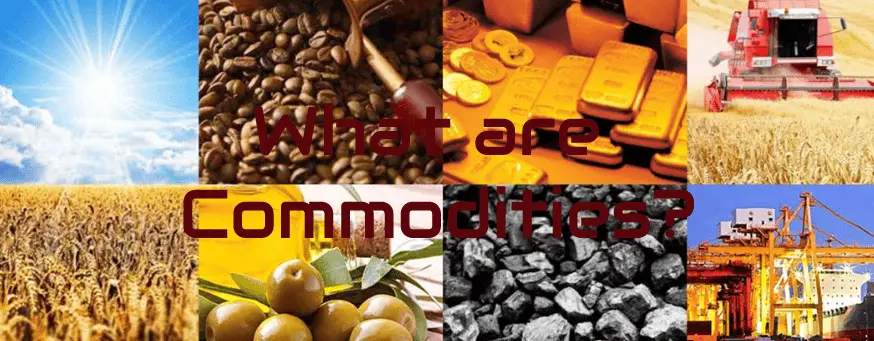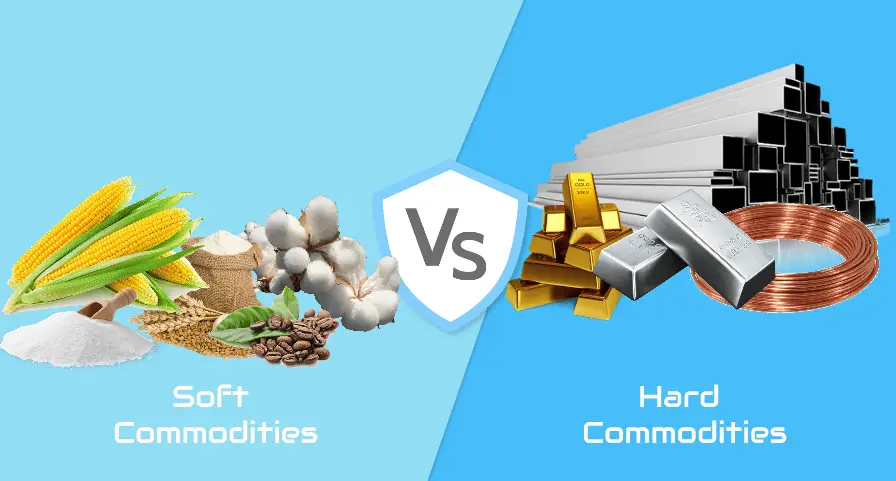What are Commodities in Trading?

The raw materials people use in their day-to-day life are called commodities. Humans use energy resources to sustain themselves, metals to construct tools, and agricultural products to feed themselves.
The commodity market can comprise physical trading in derivatives using futures, options, and forward contracts. These are all different types of derivatives contracts.
The future market was first created to serve the needs of commercial traders. Futures give farmers the possibility to arrange the buying and selling of commodities for a specific price on a future date.
Commodities can be divided into two types:
- Soft commodities.
- Hard Commodities.

Soft commodities include agricultural products such as wheat, cotton, coffee, cocoa, and sugar.
While hard commodities include mined products such as gold, silver, and oil. Commodities are vital elements of the global economy.
The top 10 most traded commodities in the world are:
- Crude Oil
- Natural Gas
- Brent Oil
- Silver
- Sugar
- Gold
- Corn
- Coffee
- Wheat
- Cotton
We can distinguish different market participants in the commodity market. We can split market participants into three categories:
- Hedgers
- Speculators
- Arbitrage

A large number of market participants provides the needed liquidity for running an efficient market. Each of these market participants has diverse investment objectives and risk profile.
Let’s briefly examine what role these market participants play in the commodity market.
The commodity hedgers are generally commercial producers and consumers. They are also called commercial traders. Their role in the market is to manage spot market risk.
The commodity price volatility is an important source of risk, so the commercial producers engage in hedging, which is a form of protection against possible losses derived from commodity price fluctuation.
For example, a corn producer will hedge his market exposure by selling corn futures since it’s exposed to the risk of falling corn prices.
The next category is the speculators.
The commodity speculators are those traders who speculate on the direction of future prices with the main goal to make a profit.
Trading commodity futures is an investment option for anyone who doesn’t intend to take delivery of the actual commodity.
The speculators in the commodity market liquidate their exposure before the expiration date.
We can further distinguish two types of commodity speculators:
- Large speculators – also referred to as the non-commercial traders (i.e. Banks and Large Financial Money Managers).
- Small speculators – also referred to as the non-reportable traders (typically retail traders).







Post a Comment